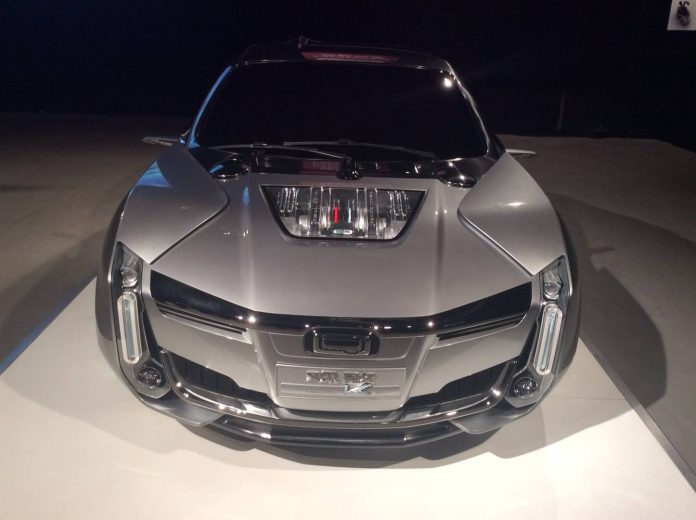The industry has seen its share of electric luxury cars from the Far East, but many of them seem to be lacking substance: The start-ups are coming and going, and some of the concept cars are clearly lacking substance. Now Qoros is showing a fully electric luxury concept, and they have one thing going for them: It is a fully established brand, with a track record of delivering. Qoros competes in the near-premium segment in China, and the cars are distinguished from their competitors by their European technology (a lot of it is developed with European suppliers) and by their distinct styling language: Qoros Design is led by former Mini chief designer Gert Hildebrand.
The fully electric concept launching at the Shanghai Auto show is called the K EV; the K alludes to Koenigsegg, Qoros’ cooperation partner for the Qamfree engine technology, as well as a potential supplier for the power electronics.
201.3 inches long and fitted with four electric motors rated at a combined 870 horsepower, the Qoros K EV is directly targeting the Tesla Model S and the hybrid versions of the Porsche Panamera; the concept cars by Lucid, Nio and Faraday Future are similarly sized. The Qoros is fast: The sprint from 0 to 62 mph takes “less than 2.7 seconds,” and it is governed at 162 mph.
With a low center of gravity and a torque vectoring system, the K EV should offer superb roadholding capabilites. The battery pack holds enough juice for well over 300 miles. And the Qoros comes with an inductive charging system, but conductive charging is possible as well, and it can be remote controlled.
Apart from the powertrain technology, the Qoros K EV is fitted with a number of forward-looking technologies that set it apart from anything else in it segment. Its passenger cell is encompassed with an extremely stiff carbon-fiber monocoque, and ther is an asymmetrical door concept with a left gullwing door and rear sliding doors. Qoros partnered with the specialist company KDX/C, which is located in Beijing and Munich.
The aggressve and expressive styling language visualizes these technologies perfectly: The center section is transparent and opens up views of the carbon structure; the additive front and rear elements and the fenders seem to float in the air. The LED head- and tallights take the vertical styling language that was launched with the Qoros 2 PHEV to the next level.
The car is laying technology bare; the semi-open hinges and the “bubbles” above the rear seats serve a function, and they bring a fighter jet aesthetic to the K EV. The interior is sporty, but it is devoid of any utopistic effects that would suggest anything resembling Stage 5 autonomous driving functions.
Most Chinese luxury concepts are characterised by soothing and flowing lines – and an almost ascetic styling language. The Qoros K EV, by contrast, resembles the extravagant and provocative concepts launched by Italian coachbuilders in the 1970s and 1980s. Ideally, it will send a similar message to a design community that seems to be rather stagnant.
The combination of aggressive design and a high-performance powertrain may be closer to series production than it seems: A few days ago, Qoros announced a strategic partnership with the Yibin region, which will funnel over 700 million towards Qoros. At the Guangzhou auto show in November, we expect to see a fully functional prototype EV.








































